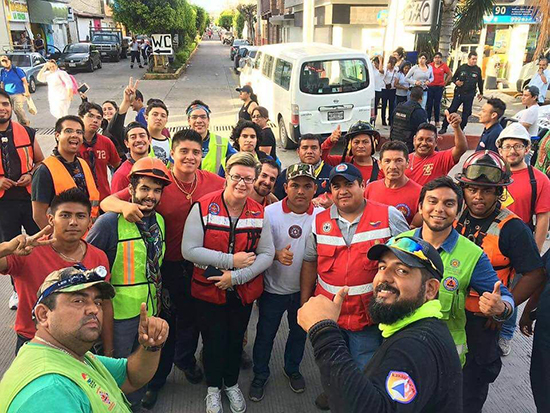- Quake 4 is a military science fiction first-person shooter video game, the fourth title in the Quake series.The game was developed by Raven Software and published by Activision.Raven Software collaborated with id Software, the creators and developers of preceding Quake games. Id Software supervised the development of the game as well as providing the id Tech 4 engine upon which it was.
- Quake is a fast-paced and intense first person shooter, tasking players with repelling cruel creatures from another dimension. You play as Ranger, a grizzled and tough soldier with enough strength to lift an ox. After government experiments involving teleportation opens a doorway to another dimension, enemies come flooding through the gate.
- The fast, skill-based arena-style competition that turned the original Quake games into multiplayer legends is making a triumphant return with Quake Champions. Seemingly anchored to prevent anything from getting in or out. It was believed this sarcophagus must hold a rare or powerful demon, but when later opened, it revealed the body of a man.
- The nature of earthquakes
- Causes of earthquakes
- Natural forces
- Artificial induction
- Effects of earthquakes
- Intensity and magnitude of earthquakes
- Occurrence of earthquakes
- Causes of earthquakes
- The study of earthquakes
- Seismic waves
- Measurement of seismic waves
- Observation of earthquakes
- Earthquake prediction
- Methods of reducing earthquake hazards
- Exploration of the Earth's interior with seismic waves
- Seismic waves
A blood-like liquid seemed to ‘bleed' through the ground as the earthquake tore apart the ground, as showcased in a video by Daily Star. The earthquake that was centred near Sivrice, Turkey also caused a series of aftershocks ranging from between 5.4 to 3.3 in magnitude.
Our editors will review what you've submitted and determine whether to revise the article.
Join

When Did Quake 3 Come Out
Earthquake, any sudden shaking of the ground caused by the passage of seismic waves through Earth's rocks. Seismic waves are produced when some form of energy stored in Earth's crust is suddenly released, usually when masses of rock straining against one another suddenly fracture and 'slip.' Earthquakes occur most often along geologic faults, narrow zones where rock masses move in relation to one another. The major fault lines of the world are located at the fringes of the huge tectonic plates that make up Earth's crust. (See the table of major earthquakes.)
Why is an earthquake dangerous?
Over the centuries, earthquakes have been responsible for millions of deaths and an incalculable amount of damage to property. Depending on their intensity, earthquakes (specifically, the degree to which they cause the ground's surface to shake) can topple buildings and bridges, rupture gaspipelines and other infrastructure, and trigger landslides, tsunamis, and volcanoes. These phenomena are primarily responsible for deaths and injuries. Very great earthquakes occur on average about once per year.
What are earthquake waves?
Earthquake waves, more commonly known as seismic waves, are vibrations generated by an earthquake and propagated within Earth or along its surface. There are four principal types of elastic waves: two, primary and secondary waves, travel within Earth, whereas the other two, Rayleigh and Love waves, called surface waves, travel along its surface. In addition, seismic waves can be produced artificially by explosions.
How is earthquake magnitude measured?
Magnitude is a measure of the amplitude (height) of the seismic waves an earthquake's source produces as recorded by seismographs. Seismologist Charles F. Richter created an earthquake magnitude scale using the logarithm of the largest seismic wave's amplitude to base 10. Richter's scale was originally for measuring the magnitude of earthquakes from magnitudes 3 to 7, limiting its usefulness. Today the moment magnitude scale, a closer measure of an earthquake's total energy release, is preferred.
Where do earthquakes occur?
Earthquakes can occur anywhere, but they occur mainly along fault lines (planar or curved fractures in the rocks of Earth's crust), where compressional or tensional forces move rocks on opposite sides of a fracture. Faults extend from a few centimetres to many hundreds of kilometres. In addition, most of the world's earthquakes occur within the Ring of Fire, a long horseshoe-shaped belt of earthquake epicentres, volcanoes, and tectonic plate boundaries fringing the Pacific basin.
Little was understood about earthquakes until the emergence of seismology at the beginning of the 20th century. Seismology, which involves the scientific study of all aspects of earthquakes, has yielded answers to such long-standing questions as why and how earthquakes occur.
About 50,000 earthquakes large enough to be noticed without the aid of instruments occur annually over the entire Earth. Of these, approximately 100 are of sufficient size to produce substantial damage if their centres are near areas of habitation. Very great earthquakes occur on average about once per year. Over the centuries they have been responsible for millions of deaths and an incalculable amount of damage to property.
The nature of earthquakes
Causes of earthquakes
Earth's major earthquakes occur mainly in belts coinciding with the margins of tectonic plates. This has long been apparent from early catalogs of felt earthquakes and is even more readily discernible in modern seismicity maps, which show instrumentally determined epicentres. The most important earthquake belt is the Circum-Pacific Belt, which affects many populated coastal regions around the Pacific Ocean—for example, those of New Zealand, New Guinea, Japan, the Aleutian Islands, Alaska, and the western coasts of North and South America. It is estimated that 80 percent of the energy presently released in earthquakes comes from those whose epicentres are in this belt. The seismic activity is by no means uniform throughout the belt, and there are a number of branches at various points. Because at many places the Circum-Pacific Belt is associated with volcanic activity, it has been popularly dubbed the 'Pacific Ring of Fire.'
When Did Quake Come Out
A second belt, known as the Alpide Belt, passes through the Mediterranean region eastward through Asia and joins the Circum-Pacific Belt in the East Indies. The energy released in earthquakes from this belt is about 15 percent of the world total. There also are striking connected belts of seismic activity, mainly along oceanic ridges—including those in the Arctic Ocean, the Atlantic Ocean, and the western Indian Ocean—and along the rift valleys of East Africa. This global seismicity distribution is best understood in terms of its plate tectonic setting.
Natural forces
Earthquakes are caused by the sudden release of energy within some limited region of the rocks of the Earth. The energy can be released by elastic strain, gravity, chemical reactions, or even the motion of massive bodies. Of all these the release of elastic strain is the most important cause, because this form of energy is the only kind that can be stored in sufficient quantity in the Earth to produce major disturbances. Earthquakes associated with this type of energy release are called tectonic earthquakes.
- key people
- related topics
NPR's sites use cookies, similar tracking and storage technologies, and information about the device you use to access our sites (together, 'cookies') to enhance your viewing, listening and user experience, personalize content, personalize messages from NPR's sponsors, provide social media features, and analyze NPR's traffic. This information is shared with social media, sponsorship, analytics, and other vendors or service providers. See details.
You may click on 'Your Choices' below to learn about and use cookie management tools to limit use of cookies when you visit NPR's sites. You can adjust your cookie choices in those tools at any time. If you click 'Agree and Continue' below, you acknowledge that your cookie choices in those tools will be respected and that you otherwise agree to the use of cookies on NPR's sites.

